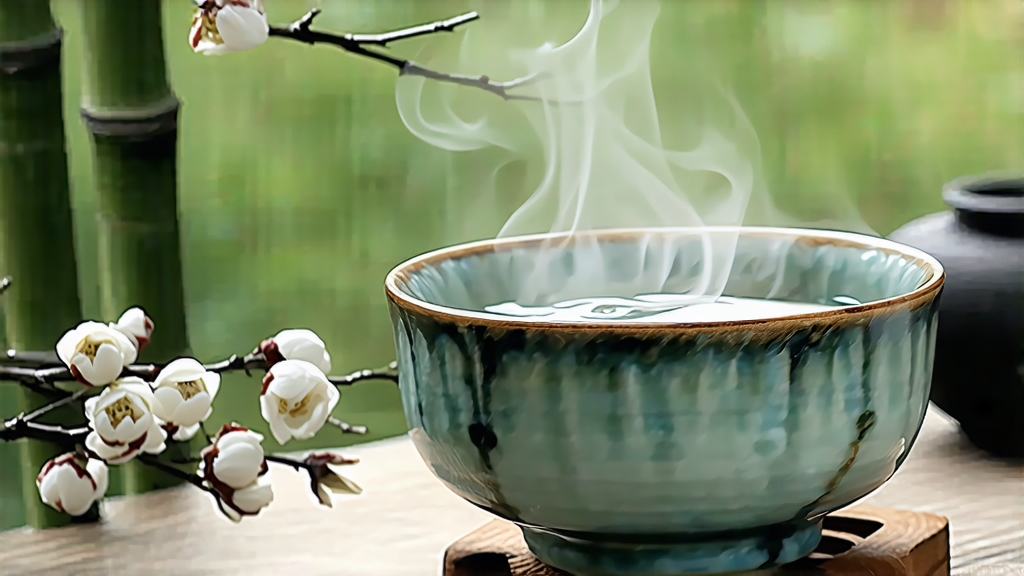
High on the forested ridges of northern Fujian, where morning clouds spill like silk across the Wuyi range, the most coveted of all white teas is born. International menus often list it simply as “Silver Needle,” yet its full Chinese name, Bai Hao Yin Zhen—“White Down, Silver Tip”—carries the poetry of its appearance: single, unopened buds sheathed in silvery hairs that catch the dawn like frost. To understand why this quiet-looking tea commands imperial prices and inspires cellar-style aging among connoisseurs, one must follow the bud from myth to mouth, from Song-dynasty court annals to your own porcelain gaiwan.
History: from palace tribute to minimalist icon
The first unmistakable mention of a “white” tea appears in Song sources (960-1279), when Huizong Emperor—himself a gifted tea critic—praised “white downy buds of superior fragrance.” Whether those buds were the direct ancestor of today’s Yin Zhen is debated, yet Fujian locals insist the cultivar Da Bai Hao was already thriving near Taimu Mountain. By the late Ming, withering technology had matured: farmers discovered that buds left to breathe under shade and moonlight lost their grassy edge and gained a mellow, almost orchid sweetness. Qing-era merchants shipped the compressed cakes to Southeast Asia, where miners brewed it to combat heat fatigue; in Europe, Dutch invoices from 1785 list “Pekoe Silver Tips” at ten times the price of black Bohea. Modern fame arrived in 1891 when a Fuding producer entered Yin Zhen at the Melbourne International Exhibition and walked away with a gold medal. Today, protected-origin status limits authentic Bai Hao Yin Zhen to Fuding and the neighboring counties of Zhenghe and Jianyang, all within a day’s drive of the East China Sea.
Cultivar and terroir: why the bud is willing
Two state-registered cultivars dominate: Fuding Da Bai Hao (“Big White Down”) and Zhenghe Da Bai. The former yields plumper buds with 5-7 % amino-acid content, translating into brothy sweetness; the latter produces slightly slimmer, more aromatic buds prized for aging potential. Both thrive in subtropical mountain humidity, granitic soils rich in potassium, and the famous “marine clouds” that drift inland, diffusing sunlight into soft, ultraviolet-rich beams. UV stress triggers the synthesis of catechins and amino acids inside the bud, while cool nights slow oxidation, locking in a pristine, silvery look. Locals say the bud must be “three parts sun, seven parts mist,” a meteorological recipe impossible to replicate in lowland plantations.
Plucking ritual: one bud, no leaf, no compromise
Authentic Yin Zhen is harvested only in early spring, typically between Qingming and Grain Rain (early April). Experienced pickers rise at 4 a.m. to climb the terraces before sunrise, when moisture keeps the buds supple. The standard is ruthless: only the unopened, 2.5–3 cm long bud, still wearing its pale green fish-scale sepals. A skilled woman can gather 800 g in a dawn, yet 30,000 buds—an entire day’s work for five pickers—yield barely 500 g of finished tea. No mechanical shears are allowed; fingernails must not bruise the base, or brown oxidation will mar the silver coat.
Withering: the art of doing almost nothing
White tea’s craft is defined less by what is done than by what is left undone. Once back at the shed, buds are spread one layer thick on bamboo trays stacked like giant books inside a drafty pavilion. For 36–48 hours they rest, untouched by pan or flame, while mountain breeze and intermittent sun withdraw moisture in slow motion. Masters gauge progress by touch: a bud ready for the next stage feels like cured leather—pliant, cool, and still fragrant of fresh hay. If rain threatens, trays are slid onto low charcoal-heated racks (50 °C max) to prevent sourness, yet purists insist sun-only withering gives the cleanest finish. Finally, the buds are baked for a mere ten minutes at 60 °C to stabilize moisture around 5 %, then cooled overnight in lime-lined earthen jars that buffer humidity. The entire process uses no rolling, no twisting, no high-temperature fixation—just air, time, and intuition.
Chemical alchemy: why silver ages into gold